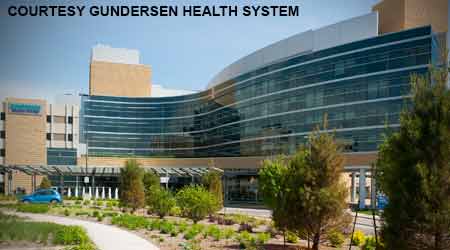Ways to Save Energy in Healthcare Facilities, Including Heat Recovery
Part 2 of a 3-part article on how healthcare leaders are rethinking traditional practices to cut energy use
Healthcare facilities are in the unique position to save energy in ways that other facilities don’t, with heat recovery being the biggest energy conservation that Gundersen Health System has done, says Alan Eber, manager of engineering and energy management. With all the heat a hospital generates, Gundersen decided to recover it and put it back in the hospital. The facility did this in a number of ways, including heat recovery chillers.
Gundersen has a variety of areas that need constant cooling, including data closets and MRI equipment. It installed a system that cools those areas and then takes the heat generated by the equipment and puts it right back into the building through the hot water line, Eber says.
The most important step facility managers can take is to measure energy use and benchmark that consumption, Eber says. Gundersen started its measurement process by reviewing its monthly utility bills and then determining the appropriate benchmark for a given building. After studying its more than 40 facilities, Gundersen prioritized those that were farthest from their benchmarks and determined how much money was being spent on energy for them. Eber says that helped determine whether time and money should be spent on a given building.
Once target buildings are identified, Gundersen then does an energy audit, walking through poorly performing buildings and creating a list of energy conservation measures (ECMs). After calculating costs and potential savings, the list is prioritized by taking into account payback time, how much the ECM contributes to Gundersen’s overall energy goal, and whether the building is slated for renovation.
“Once you’ve implemented the ECMs, you need to continue measuring the buildings,” Eber says. “You can’t just walk away, because over time they will degrade and lose their energy efficiency. All of this can be as detailed or as easy as you want.”
It’s important for someone to be held accountable, making sure that measurements are being taken and problems addressed, Eber says. Gundersen has regular meetings where facility managers report their energy use, any anomalies, future projections, and any changes in energy consumption. The goal is to reduce utility use every year so that the system ultimately becomes energy independent. Gundersen reduced its utility use 10 percent in 2014, and through early December 2015 it had trimmed consumption another 12 percent.
Related Topics:












